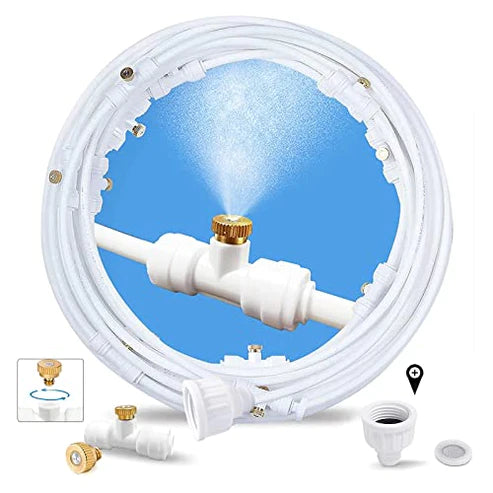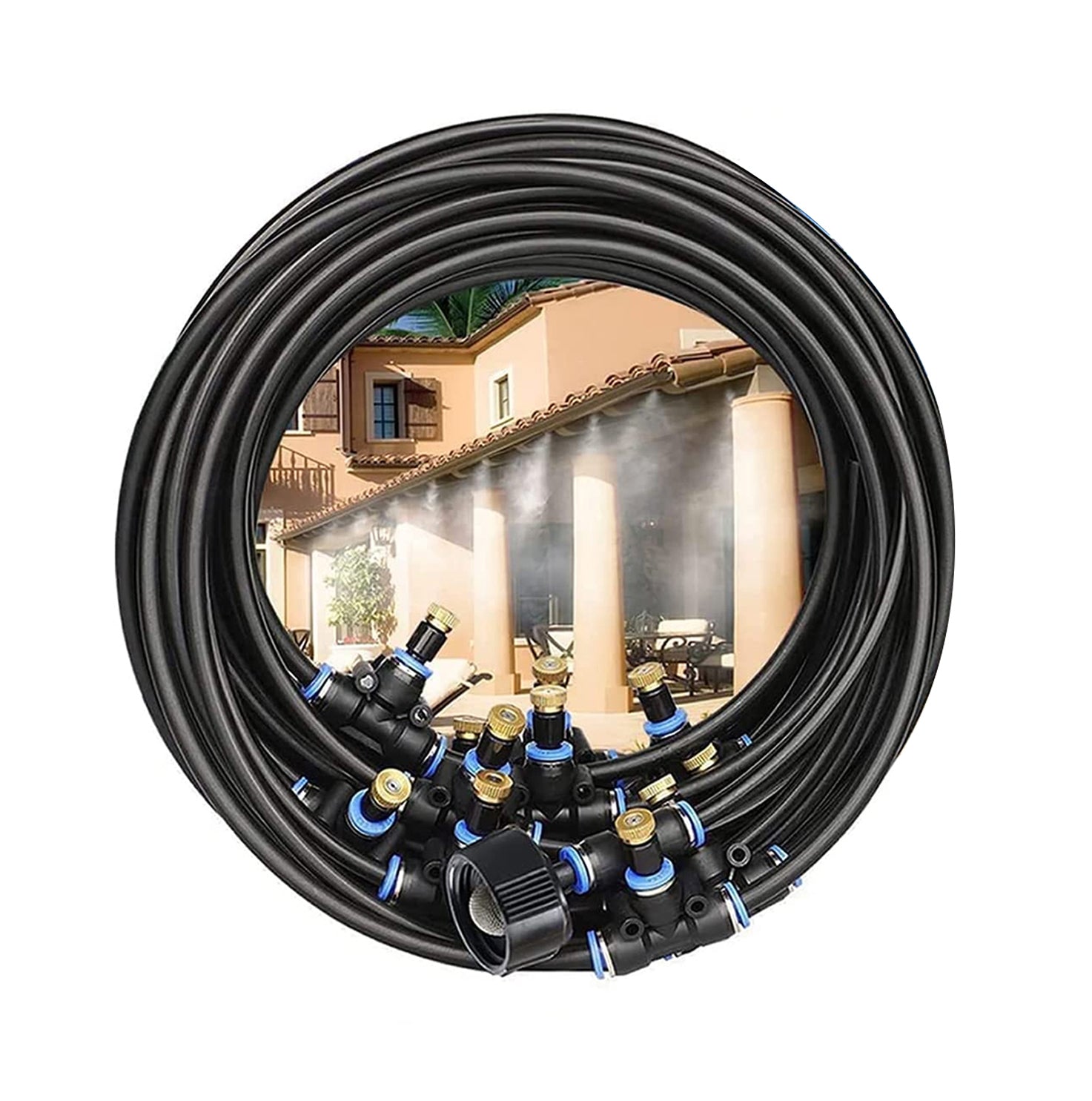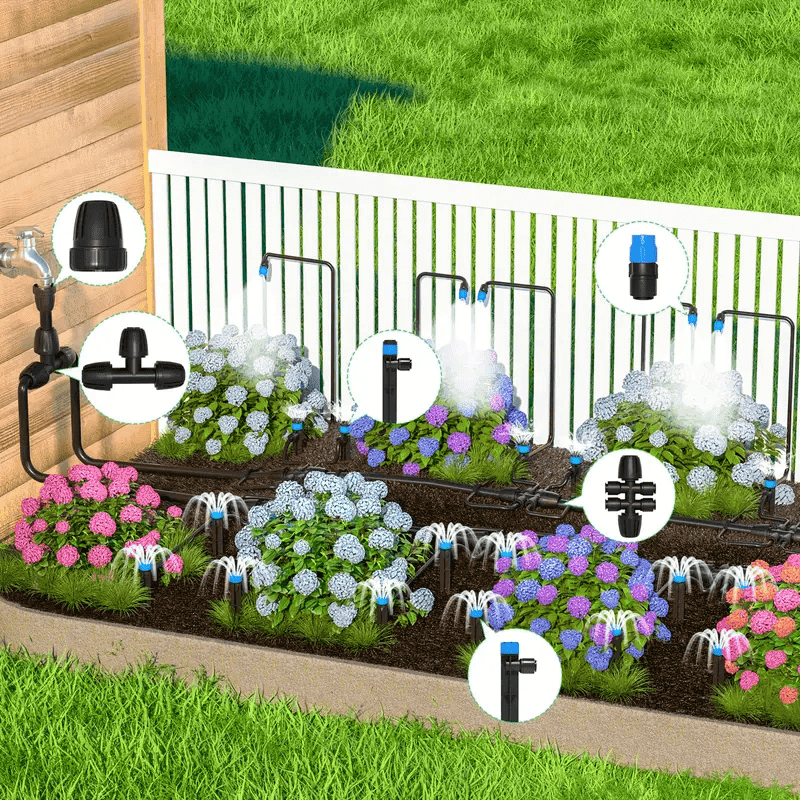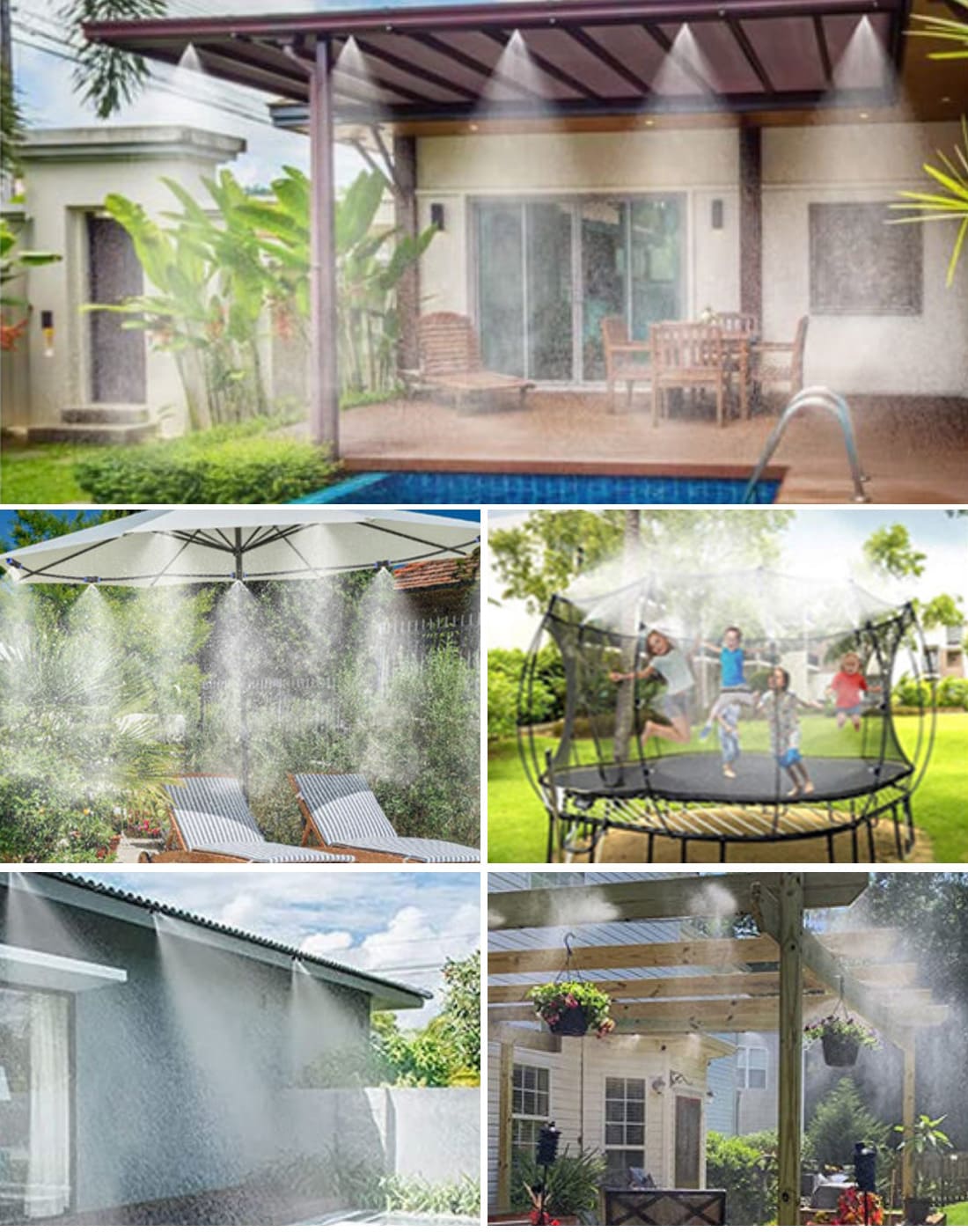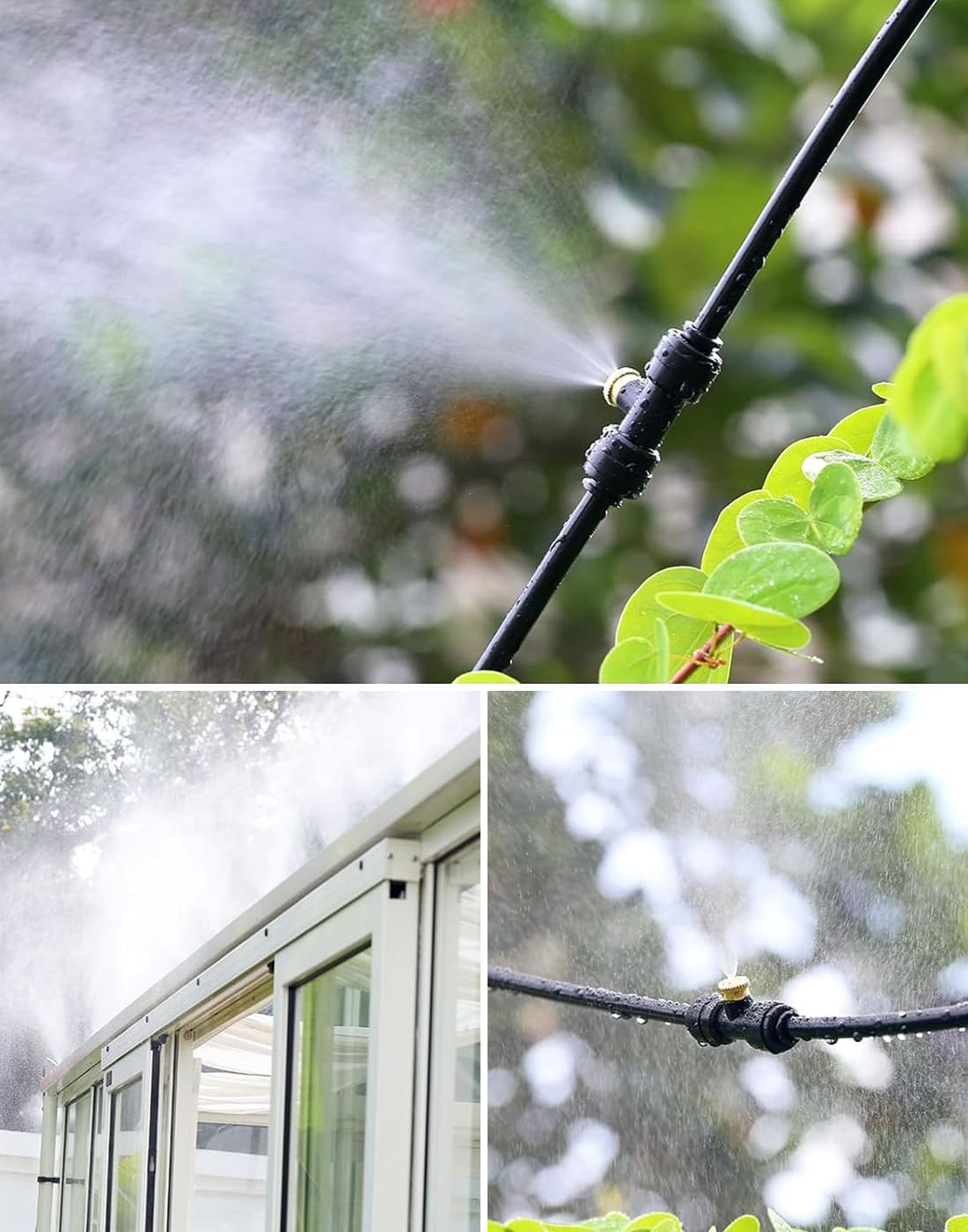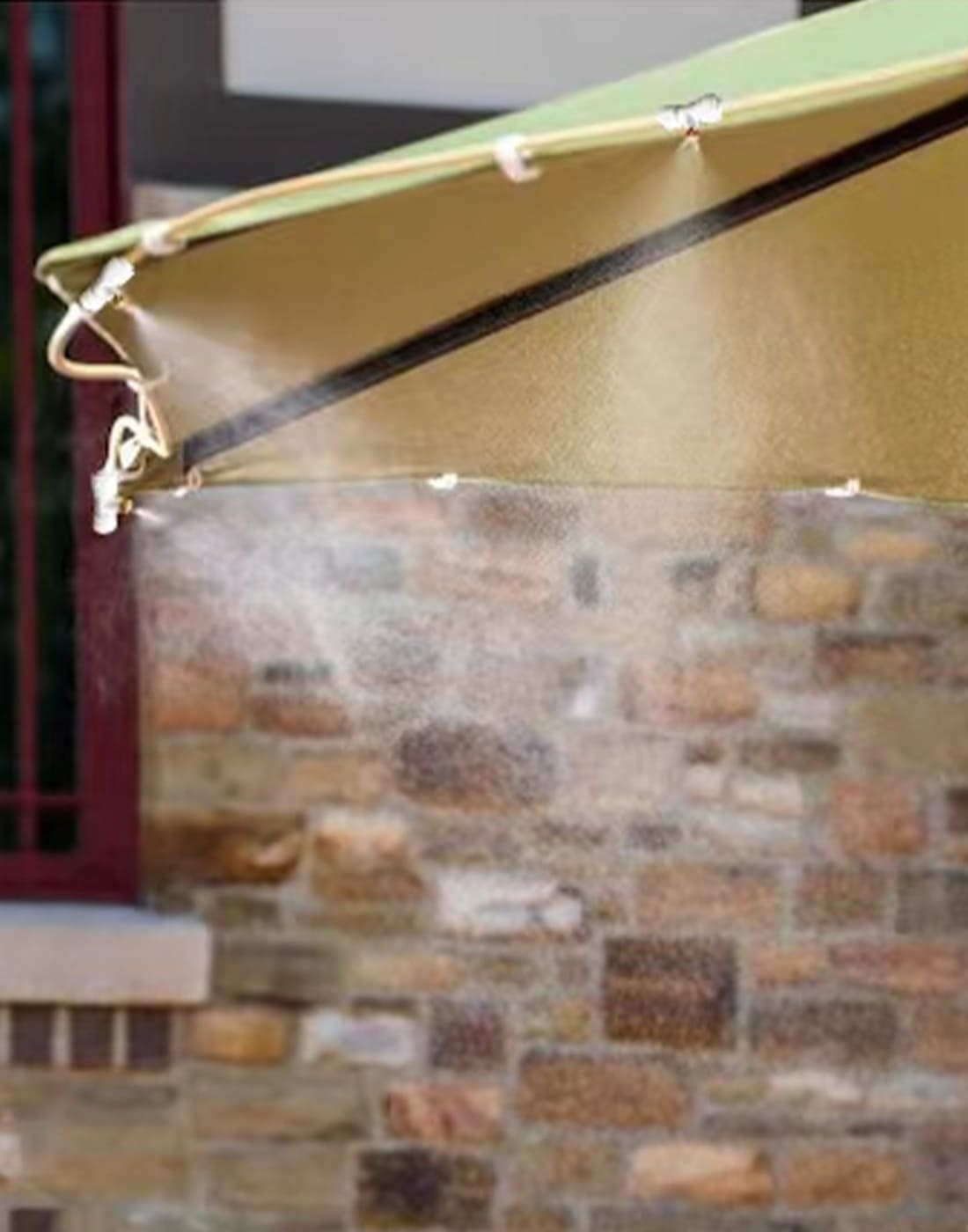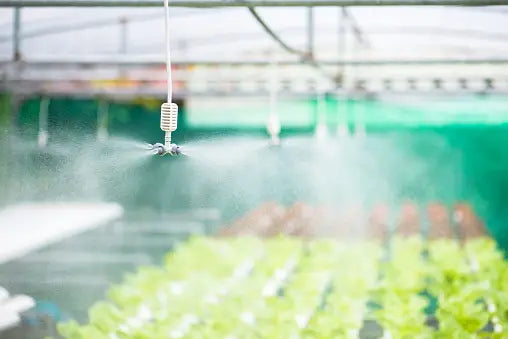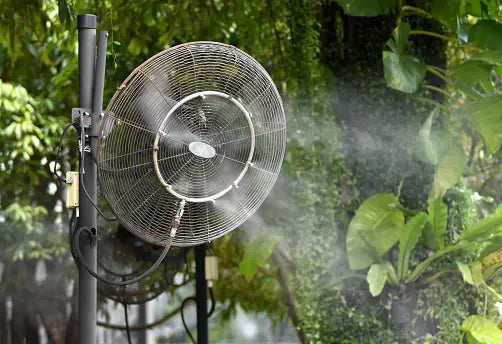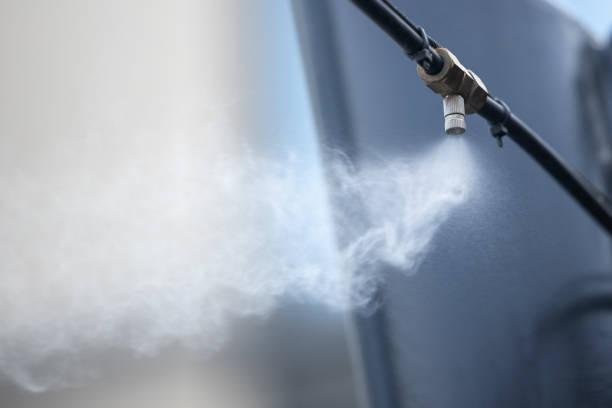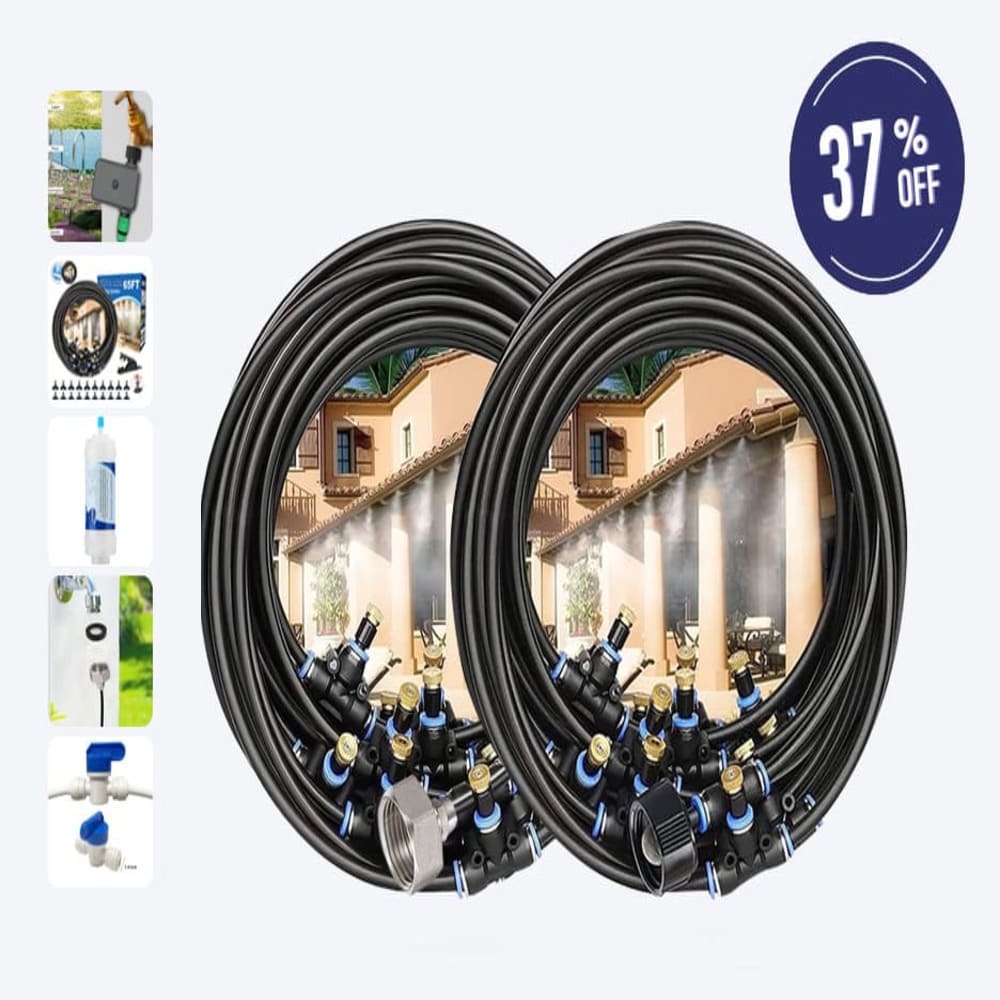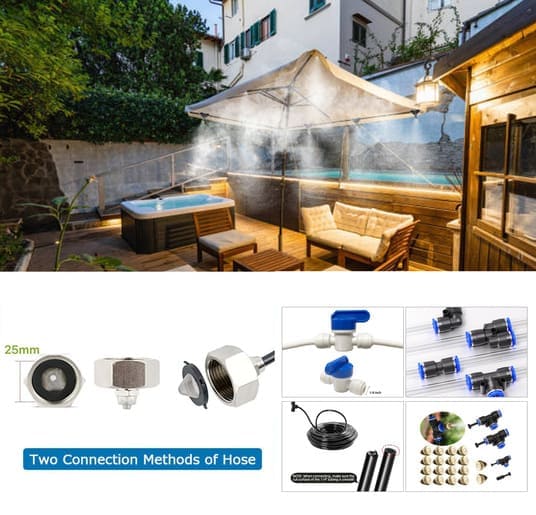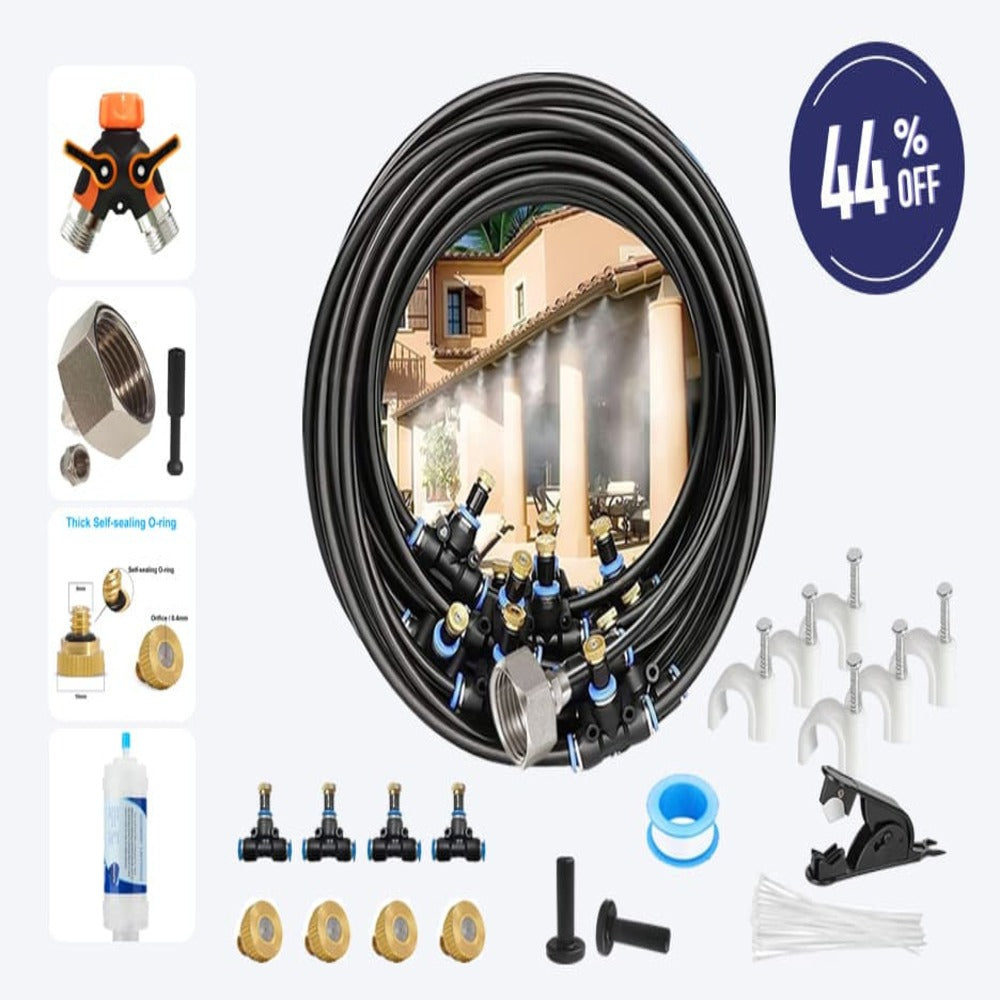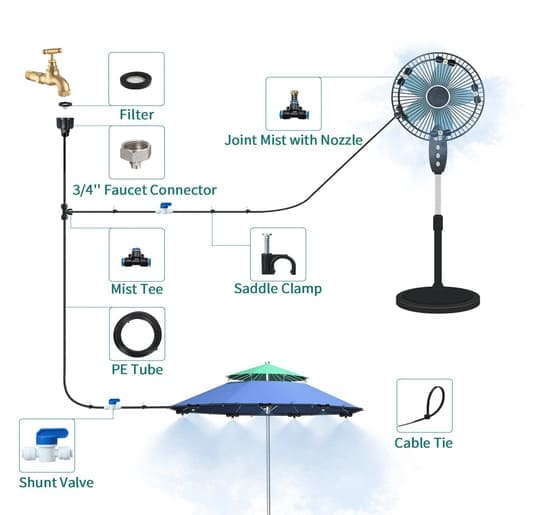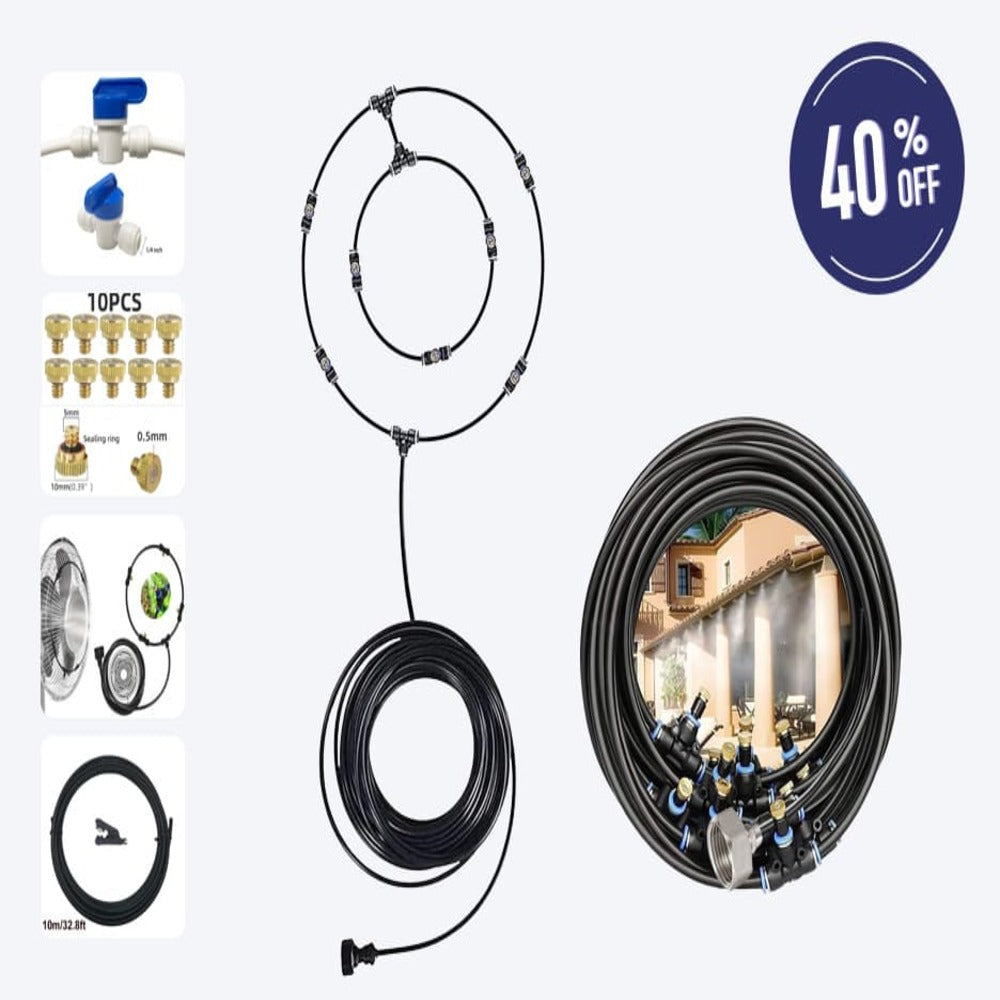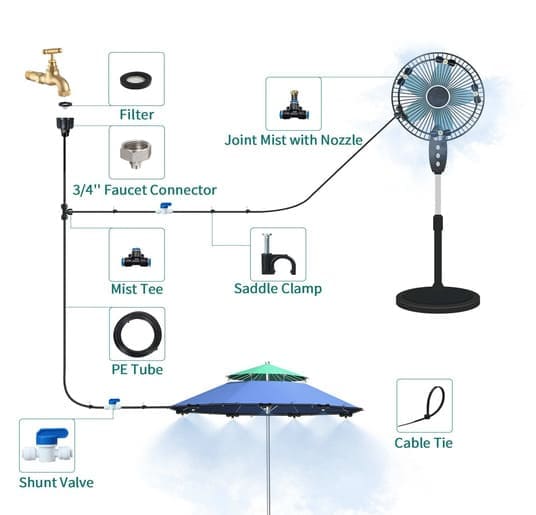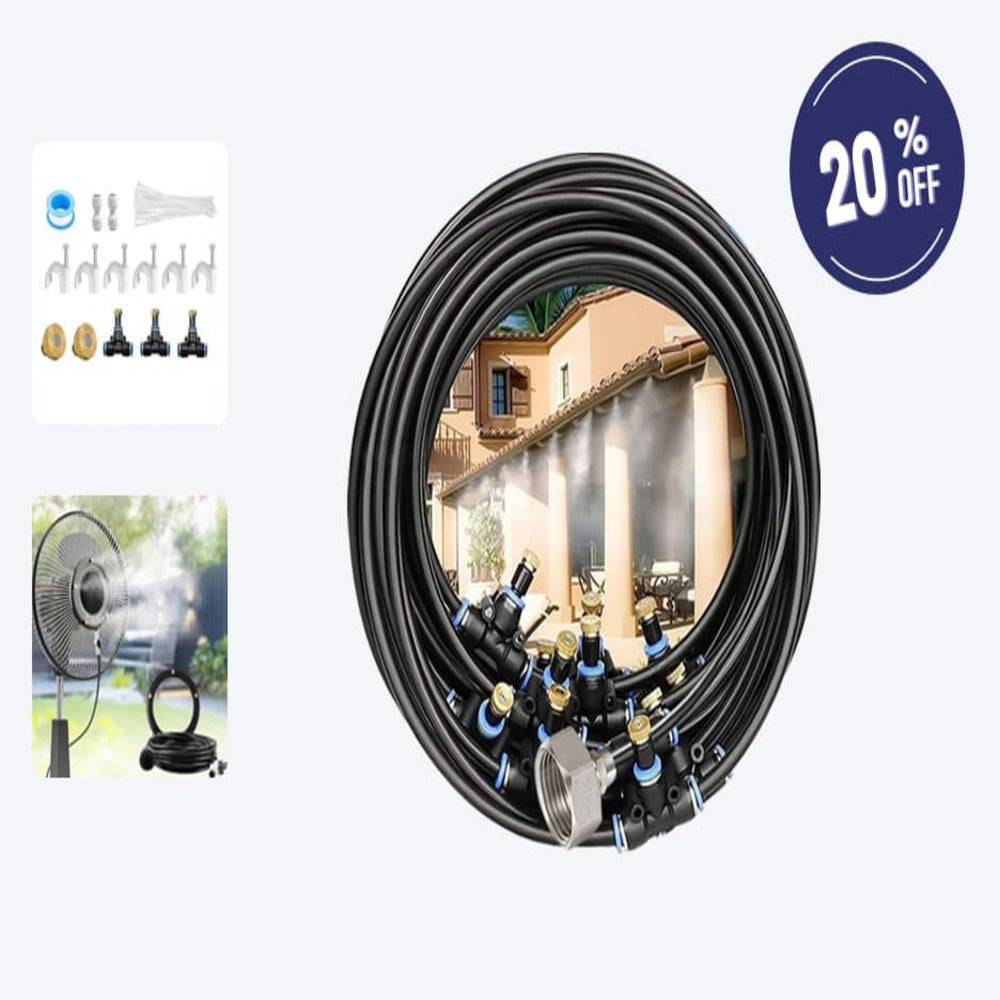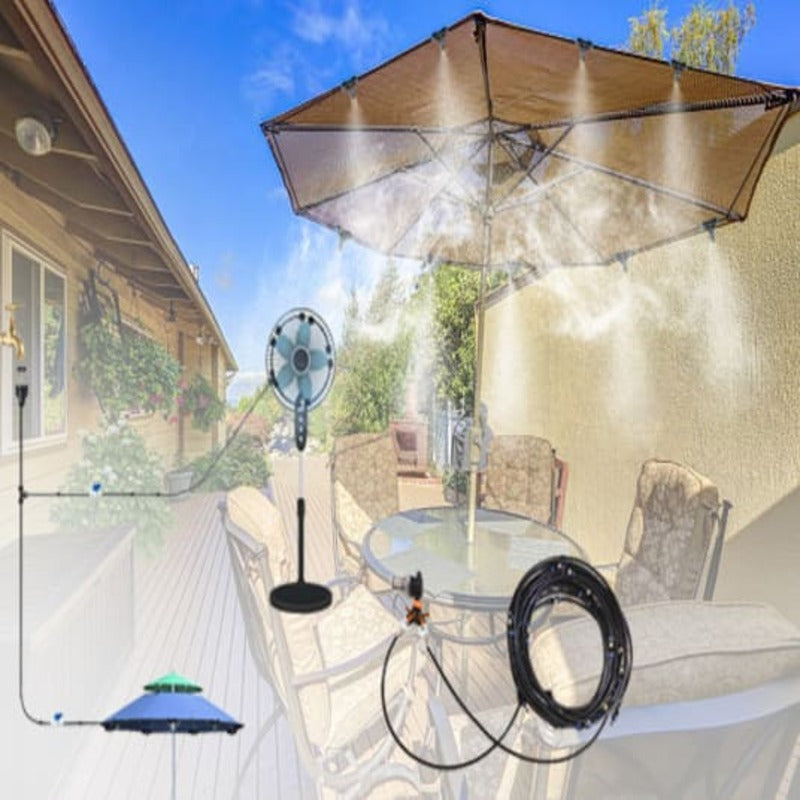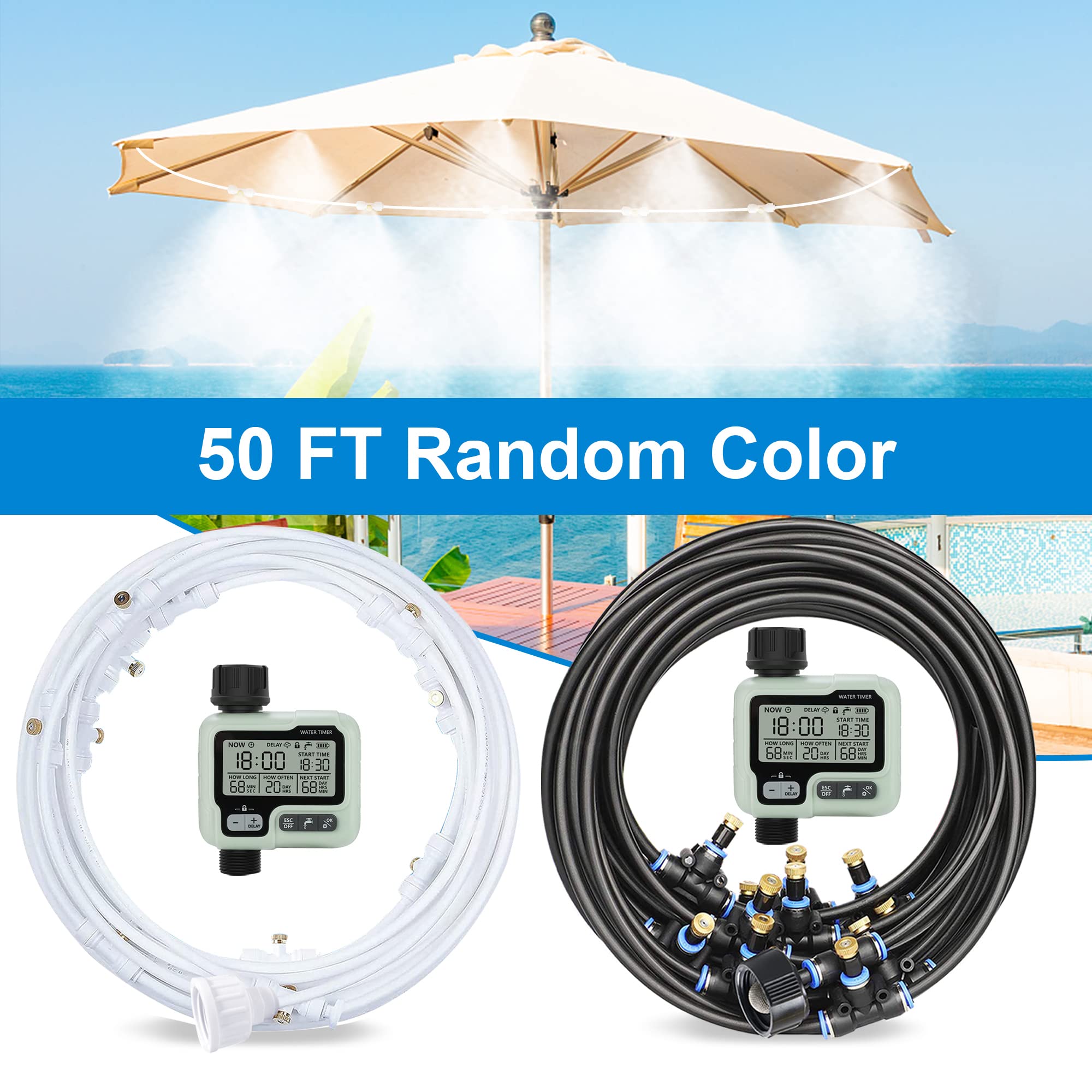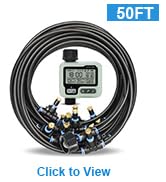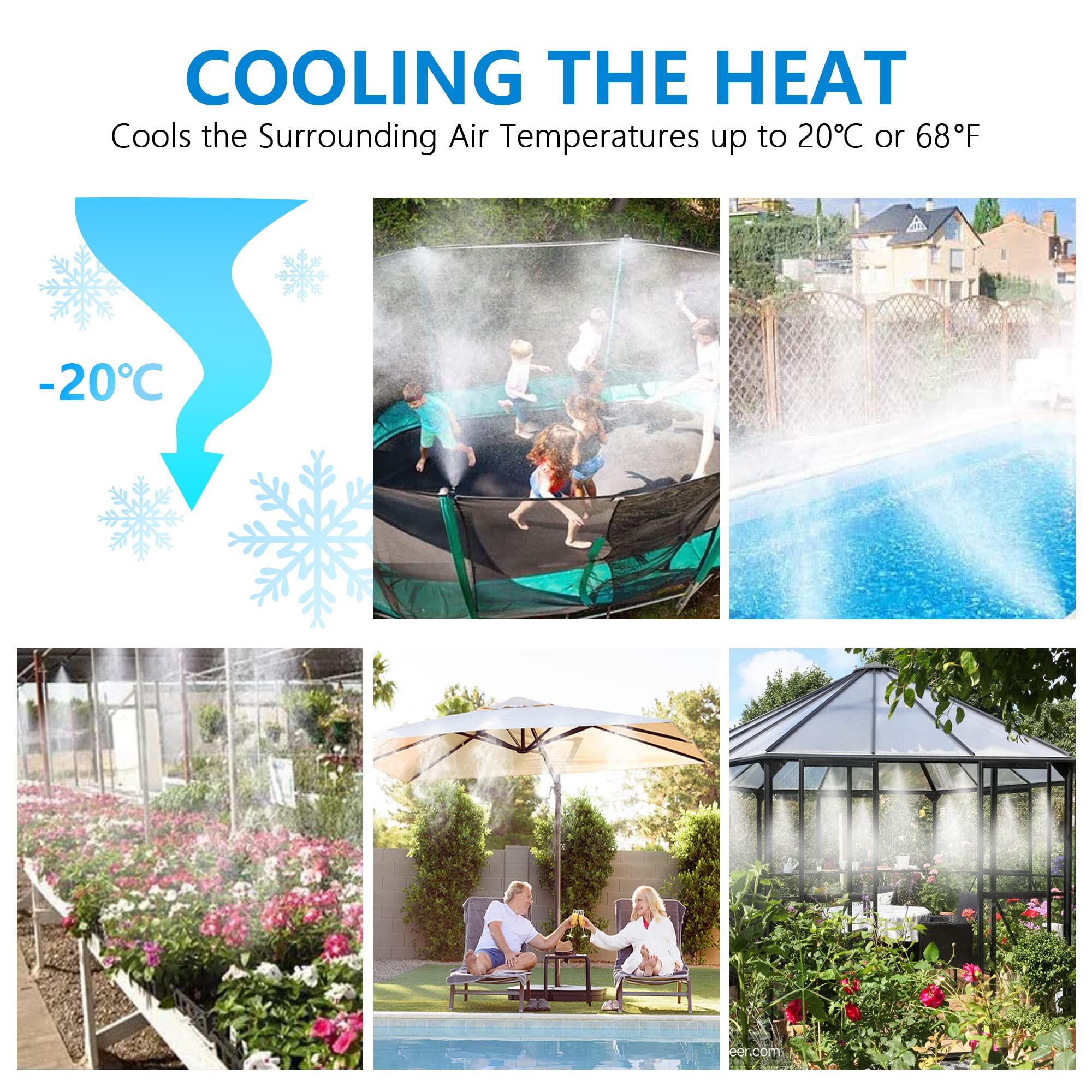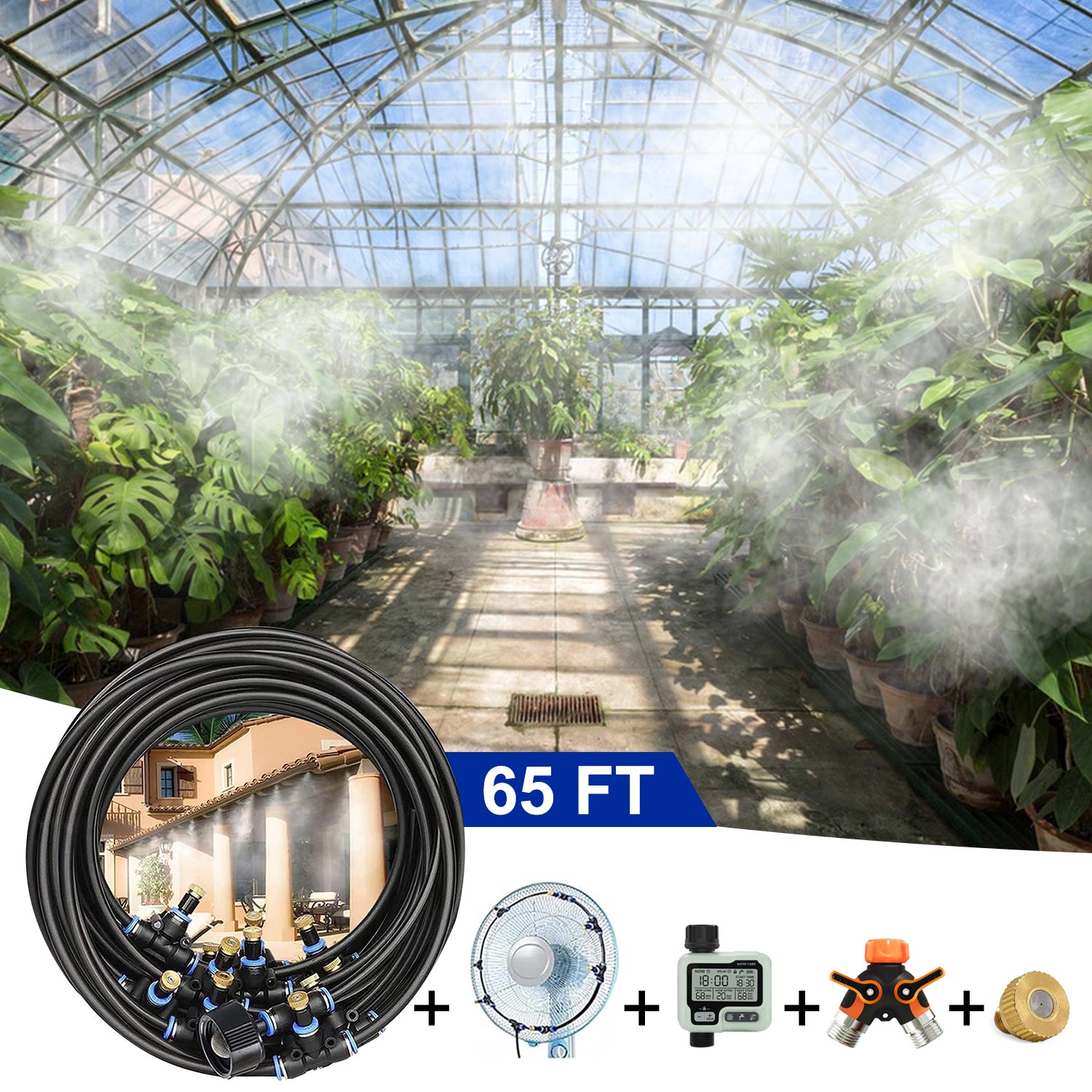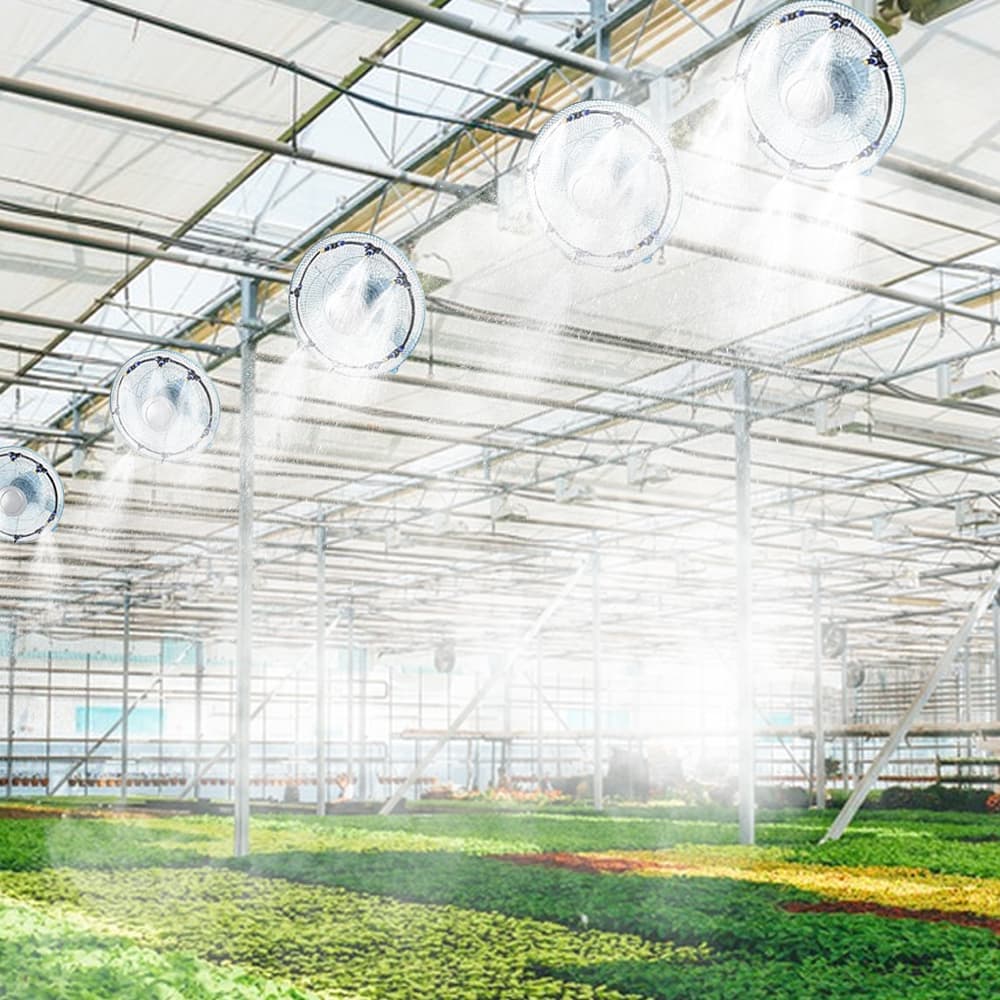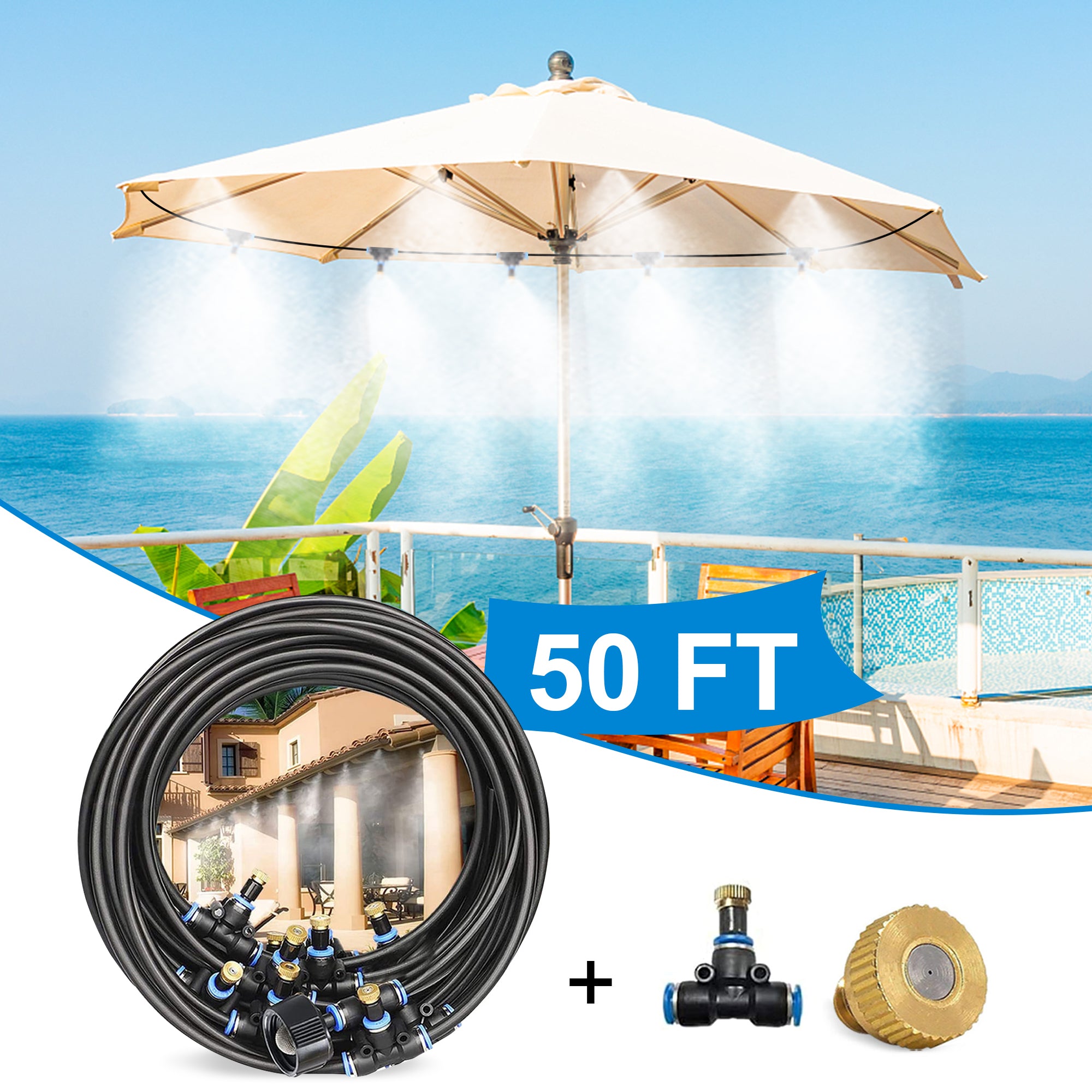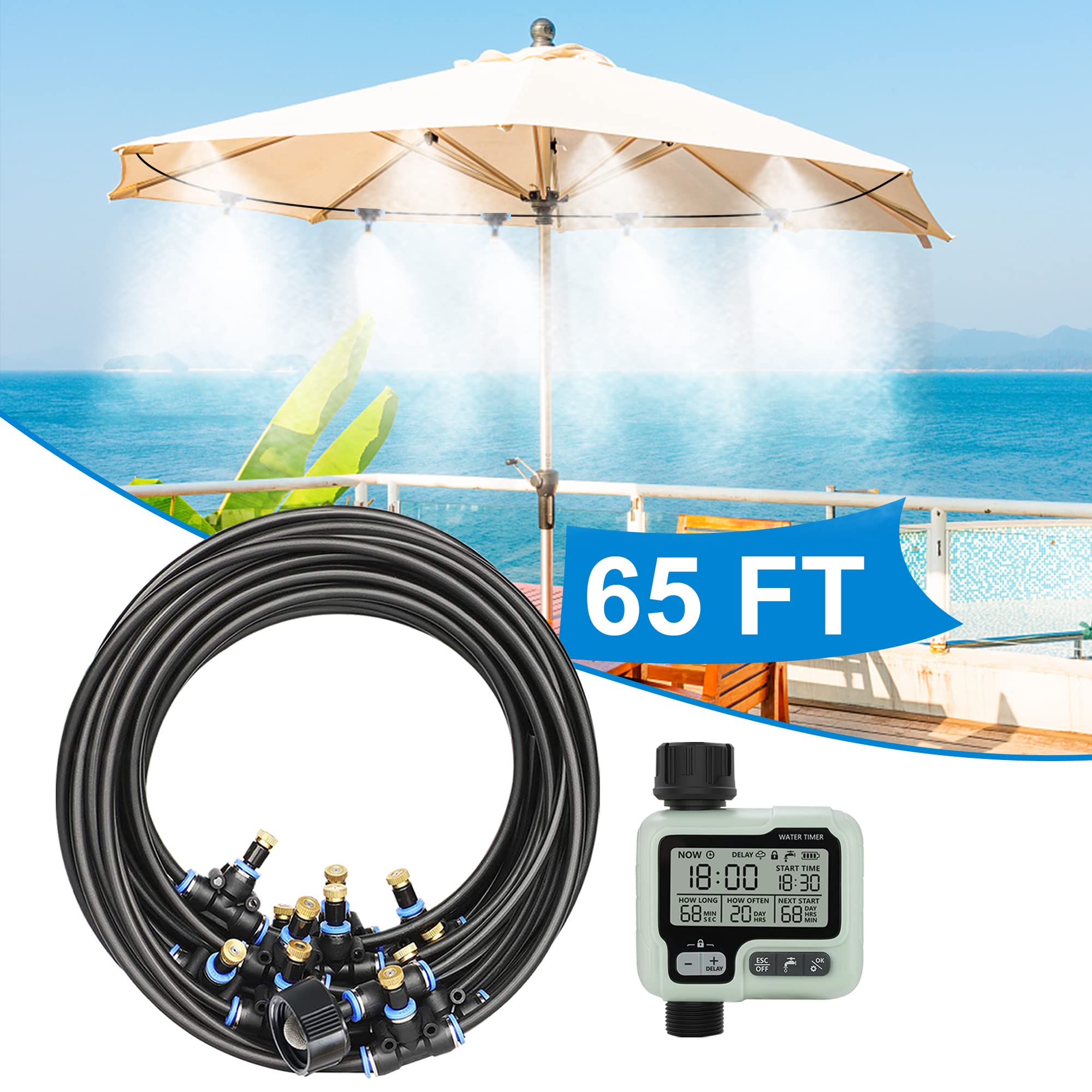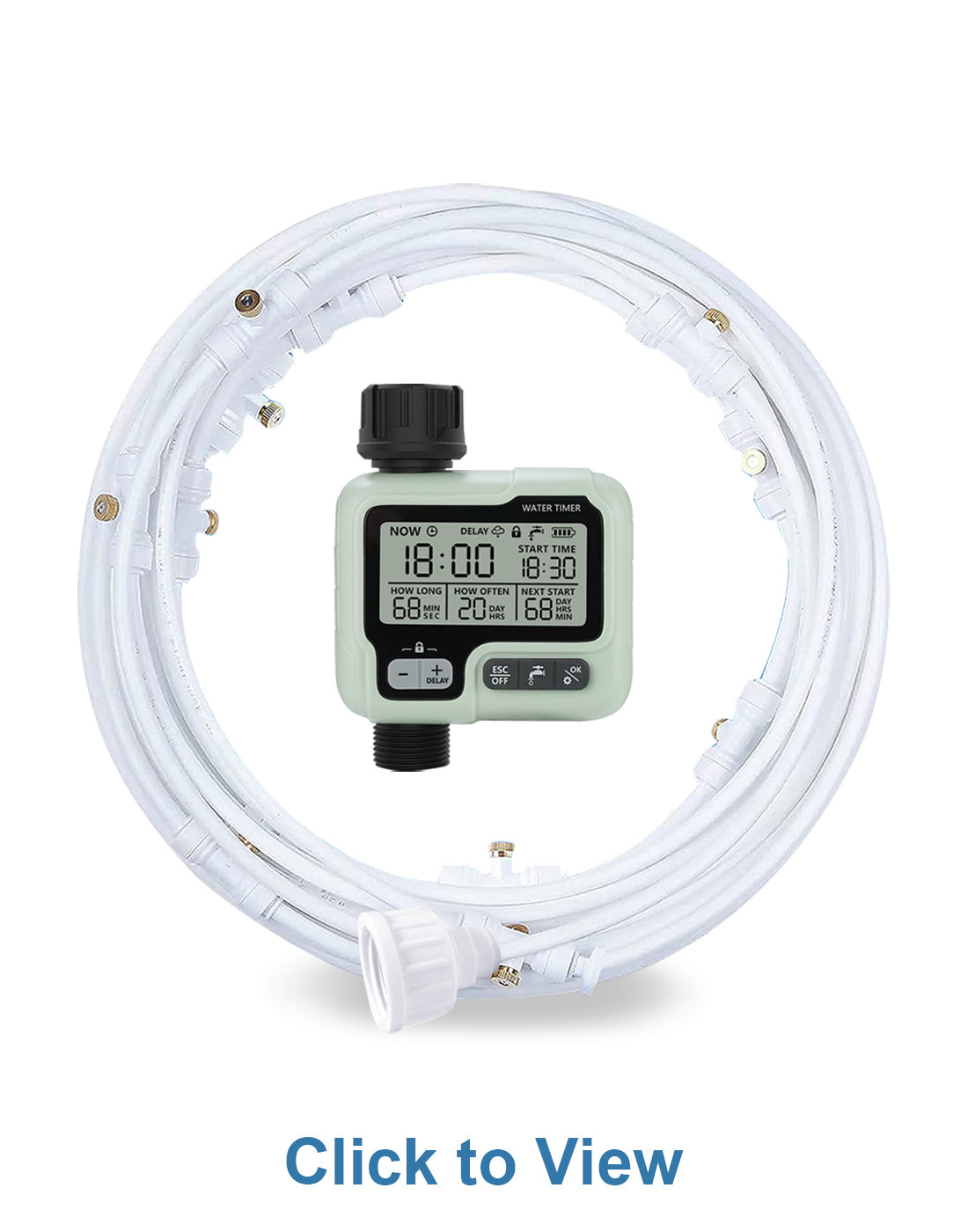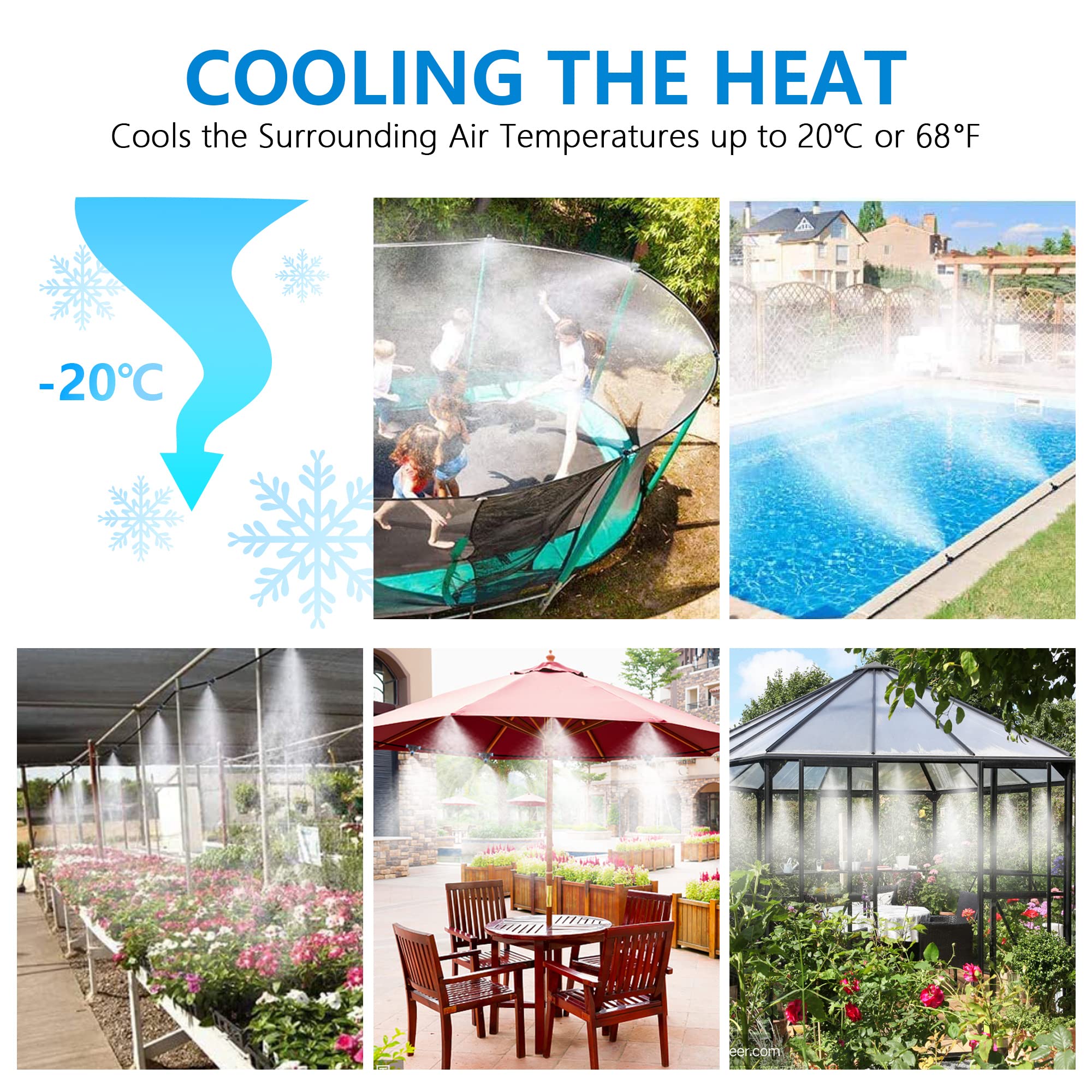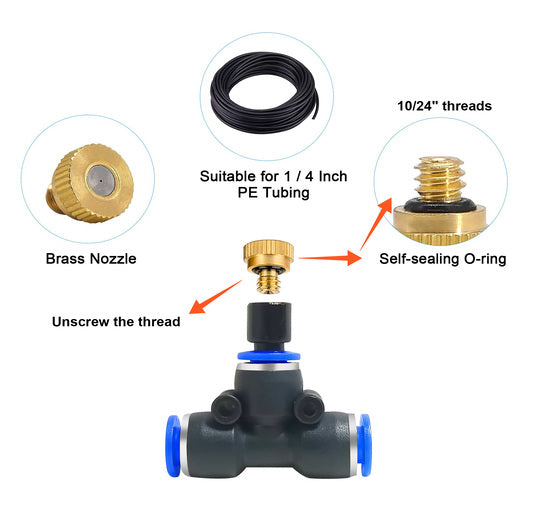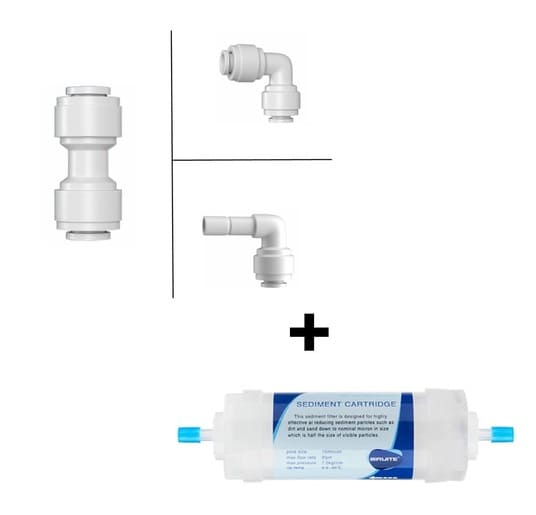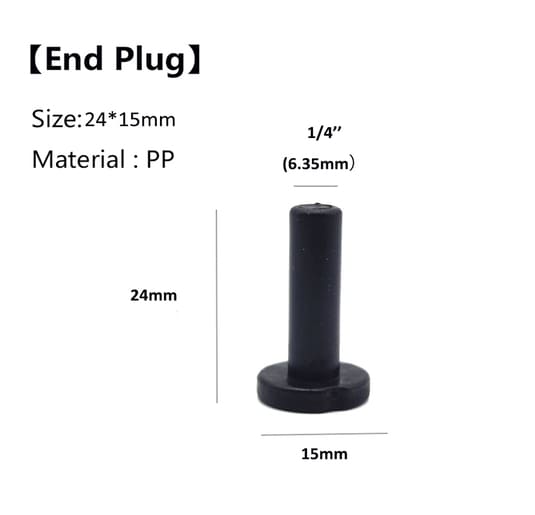In the American Southwest, summers are notoriously hot, with places like Arizona experiencing uncomfortable temperatures both indoors and out. Agriculture faces similar challenges. During summer, the internal temperature of greenhouses used for growing crops can become excessively high, especially on sunny days. Even with vents fully open for natural ventilation, temperatures inside the greenhouse can soar above 90°F at midday.

To improve the land utilization rate of the solar greenhouse and increase the operating space of the solar greenhouse, a new type of north-south long-span greenhouse is used. This article demonstrates a low-pressure misters solution. The low-pressure mister device consists of a filter, a hose splitter, and a pipe hose. adapter, Hose Timers, and misting nozzle. The mist droplets of the greenhouse misting system mix with the air and use the latent heat of evaporation of water to absorb the heat in the air to achieve cooling.
In recent years, in order to help some high-temperature areas with cooling solutions, we have also helped with many solutions, such as natural ventilation cooling, fan ventilation cooling, shading cooling, wet curtain-misting fans cooling, dehumidification cooling, misting cooling and roof fogging. Research on curtain cooling and other aspects
Three Misting Systems kit analysis
Today, we will introduce a cooling system solution that combines misting systems with natural ventilation to carry out summer cooling. Under sunny conditions, the upper and lower vents of the greenhouse are always open; misting systems are installed misting 35Ft + timer + separator kit, 50Ft + timer + filter + separator, 65Ft + use 35 fan assist function + timer + separator + nozzle, Three misters accessory modes ,Compare the changes in temperature and humidity in the greenhouse and outdoors, and study the evaporative cooling efficiency of the misting system under different accessory modes. The best misting systems cooling operation mode is obtained to solve the summer cooling problem of large-span greenhouses in high-temperature areas.
- 35Ft + timer + separator kit
- 50Ft + timer + filter + separator
- 65Ft + use 35 fan assist function + timer + separator + nozzle
35Ft + timer + separator kit

Advantages:
-
Cooling Effect: The misting system effectively lowers the temperature inside the greenhouse, creating a more favorable growth environment, especially during hot weather.
-
Increased Humidity: By releasing water mist, the system also helps increase humidity, which is beneficial for the growth of certain plants.
-
Automation Control: The use of a timer makes operation more convenient, allowing you to automate adjustments to the misting frequency according to your needs without manual intervention.
Disadvantages:
-
Humidity Management: In some cases, excessive misting may lead to overly high humidity. It may require adjusting the timer settings to prevent excessive humidity, which could affect plant health.
-
Water Resource Consumption: Using a misting system consumes a certain amount of water resources, which requires consideration of water supply and costs.
-
Monitoring Requirements: Regular monitoring of greenhouse temperature and humidity is needed to adjust the misting system's operation based on plant requirements.
50Ft + timer + filter + separator

Operational advantages:
- Effective cooling: Spraying can significantly reduce the temperature inside the greenhouse and reduce the adverse effects of high temperature on plant growth.
- Humidity Control: Increasing air humidity is essential for the growth of plants that require higher humidity.
- Automation system: The timer can reduce manual intervention, automatically control the spray time and improve efficiency.
- Filtration system: The use of filters and separators ensures water quality and extends the life of the system.
- Save resources: By timing the spray, you can save water and reduce energy consumption.
Operational disadvantages:
- Equipment maintenance: Regularly clean and maintain filters and separators, and check for clogged nozzles.
- Water Management: Although mist systems save water, they still need to be used with caution in areas with limited water resources.
- Risk of excessive humidity: If the timer is set incorrectly or there is too much spray, it can cause excessive humidity and increase the risk of disease
65Ft + use 35 fan assist function + timer + separator + nozzle

Solution advantages:
- Uniform cooling: misting systems can effectively reduce the temperature in the greenhouse and provide a more comfortable environment to promote plant growth.
- Increased Humidity: For plants that require higher humidity, misters can provide the necessary humidity, especially in dry climates.
- Fan assist: The fan enhances air circulation and helps to evenly distribute water mist. It can also simulate natural wind and enhance the wind resistance of plants.
- Automated control: timers can save manpower, automatically control misters time, and improve efficiency.
- Easy to install and maintain: DIY kits are usually designed to be user-friendly and easy to install and maintain.
Solution Disadvantages
- Water mist can cause high humidity: If not managed properly, mist can cause high humidity, increasing the risk of disease.
- Maintenance needs: The system requires regular maintenance, such as changing filters and cleaning nozzles, to maintain optimal performance.
- Energy Consumption: While timers save energy, the constant operation of fans and pumps increases power consumption.
- Water resources management: If water resources are limited, they need to be managed carefully,
Through this cooling solution that combines spray and fans, the greenhouse can achieve more efficient temperature and humidity management, creating a more suitable environment for plant growth. However, ensuring the economics and sustainability of the system requires careful planning and management of costs and resource us
How Much Mist Should be Sprayed in a Greenhouse or Drip Irrigation

The necessity for mist in a greenhouse or within a drip irrigation setup shifts with a variety of elements, including the species of plants under cultivation, ambient conditions within the greenhouse (notably temperature and humidity), and seasonal variations. The primary aim is to uphold ideal humidity levels conducive to plant vitality, usually in the range of 40% to 70%, steering clear of overly moist conditions that might foster the onset of diseases.
Aiming to circumvent excessive moisture buildup or heightened humidity that could precipitate plant ailments, the recommended rate of mist application is generally between 0.1 and 0.5 grams per square meter per second. This specific rate aids in reducing greenhouse temperatures while simultaneously ensuring sufficient humidity levels that support photosynthesis and overall plant development.
Implementing an automated misting system with a timer or humidity sensor can help in maintaining the ideal balance more efficiently.. For instance, increased misting may be warranted during the warm midday hours to aid in cooling, while a reduction in mist levels during the cooler early morning and late evening hours helps avert excessive humidity. This level of precision in controlling misting not only promotes optimal plant growth but also aids in the prudent use of water and energy resources.

Eliminate key factors
- Plant needs: Different plants have different humidity and water needs. For example, tropical plants may require higher humidity, while some plants in arid regions require lower humidity.
- Size of Greenhouse: The size of the greenhouse affects the amount of mist required. Larger greenhouses may require more water to maintain the same humidity levels.
- Climate conditions: In hot or dry climates, more spray may be needed to lower temperatures and increase humidity.
- Misting systems: The size and number of nozzles, the performance of the water pump and the overall design of the system will all affect the amount of spray required.
Recommended settings
Generally speaking, the ideal range for greenhouse misting amounts is usually between 0.1 and 0.5 grams per square meter per second. This range is sufficient to provide adequate cooling and humidity control under most conditions, but should be adjusted on a case-by-case basis.
The use of automated control systems, such as humidity sensors and temperature controllers, can automatically adjust the amount of misting based on real-time environmental data, improving efficiency and accuracy.
Precautions
- Prevent excessive moisture: Excessive amounts of misting may lead to excessive humidity in the greenhouse, increasing the risk of disease.
- System maintenance: Regularly inspect and maintain misting systems to ensure they operate stably and efficiently.
- Properly setting the amount of misting is crucial to maintaining an ideal growing environment in the greenhouse. By carefully considering the above factors and regularly monitoring and adjusting system settings, you can ensure healthy plant growth in your greenhouse
Nozzle Quantity Calculation:
- Calculation of the number of nozzles:The greenhouse area is 25 square meters, and each nozzle covers 0.4 square meters, so the number of nozzles required is approximately: 25/0.4=62.5. Rounding up, the number of nozzles required is approximately 63
- Nozzle Layout:Nozzles are evenly distributed at the top of the greenhouse to ensure that each plant area is covered by the mist.
- Nozzle Flow Rate Setting:Based on the nozzle flow rate range of 1.3 to 2.4 grams per second, choose a medium flow rate, such as 1.8 grams per second for each nozzle, to ensure sufficient mist coverage without over-wetting.
- System Connection:Connect all nozzles through piping to a centrally controlled water pump, providing necessary water pressure and flow.
- Timer Control:Use a timer controller to automatically adjust the misting frequency and duration, such as misting for 5 minutes every hour during the hottest part of the day.
How do You Set the Misting System Timer in a Greenhouse?

Based on greenhouse management experience, the operating time for the misting system is set from 8:30 AM to 6:00 PM, a period when the greenhouse temperature is relatively high. During this time span, the misting cooling system is not continuously on but is controlled based on temperature. When the greenhouse temperature exceeds 30°C, the misting cooling system automatically activates and operates in a cyclic manner. During the experimental period, three cycle modes are set: ① Misting for 60 seconds, then stopping for 300 seconds; ② Misting for 90 seconds, then stopping for 300 seconds; ③ Misting for 120 seconds, then stopping for 300 seconds. The greenhouse ventilation ports are always open, with the top vent opening width at 0.8 meters, and the side vent opening width at 1.6 meters.

Manual Watering
Schedule manual watering for 1min to 23H59mins without interrupting your set cycle

Automatic Watering
Easy to set Start Time, Watering Duration(How Long) from 1min to 23H59mins, Watering Frequency(How Often) for Every 2 to 6 days or Specific Day.
Timer will automatically run the watering plans, free you from traditional watering.
Operation Case
Assuming we have a greenhouse measuring 5 meters in width and 7 meters in length, totaling an area of 35 square meters, used for cultivating orchids which are sensitive to temperature and humidity. Orchids require an environment with temperatures around 18-29°C and relative humidity between 50-70%.
Installation Steps:
-
Misting System Layout:Install 65 feet (about 20 meters) of PE piping horizontally across the top of the greenhouse. The pipes should be evenly distributed across the top, with a nozzle installed every 1.5-2 meters to ensure full coverage of the greenhouse.
-
Fan Selection and Installation:Install a wall-mounted fan at high points on both ends of the greenhouse. The fans should cover the entire greenhouse to promote air circulation and help distribute the mist evenly.
-
Timer Setup:Install a timer that can control both the water pump and fans. Set the timer to activate the misting system during the hottest part of the day (e.g., from 12 PM to 3 PM), misting for 10 minutes every hour.
-
Separator Installation:Install a separator at the water source entry point to ensure that large particles in the water do not pass through the nozzles, keeping the mist fine.
Operation and Effect:
- At 12 PM each day, as the external temperature rises, the timer automatically activates the misting system and fans.
- The misting system starts, and fine mist covers the entire greenhouse, gradually lowering the temperature to the ideal range for orchid growth.
- Simultaneously, the fans operate, ensuring air circulation in the greenhouse, preventing excessive humidity, and reducing the likelihood of diseases.
- After monitoring for several weeks, we observe that the temperature and humidity in the greenhouse remain in the ideal state, with significant improvement in the growth rate and health of the orchids.
Test Results:
- By using the misting system in combination with fans, the average temperature inside the greenhouse is 5-7°C lower than outside, with less fluctuation, providing a stable environment for the plants.
- Humidity is maintained at 60-65%, within the ideal range, beneficial for the orchids to absorb moisture and nutrients from the air.
- The plants' leaves are fuller, growth rate is accelerated, and both the number and quality of blooms have improved.
Through this case study, we can see that a properly designed and used misting cooling system can significantly improve the microenvironment inside the greenhouse, promoting healthy growth of the plants.



